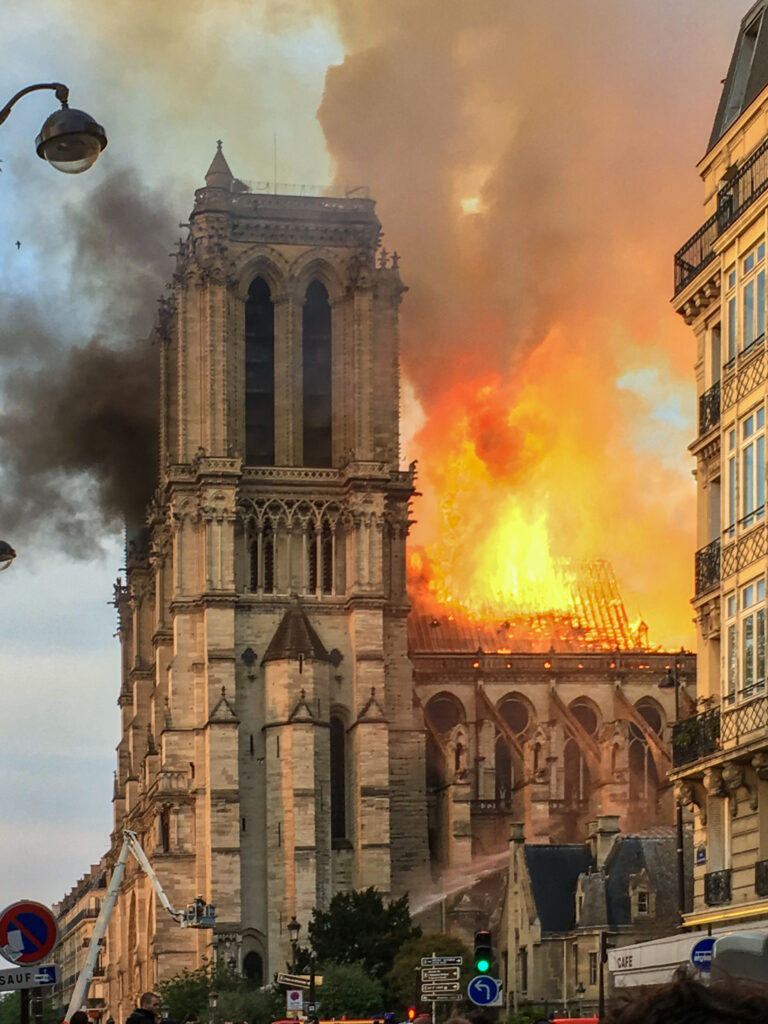A New tool to Protect Cultural Heritage: VR Training for First Responders
VR could reveal to be a game-changer in the training of fire responders tasked with safeguarding tangible cultural heritage artifacts during emergencies
On the day Notre Dame de Paris was devastated by a major fire, trained firefighters managed to save many priceless artifacts that had been kept in the Basilica for centuries. This was possible because the Sapeur Pompiers of Paris had been trained to deal with this type of need during an emergency.

Dealing with this type of emergency, in fact, implies that rescuers are aware of the importance of cultural heritage, know how to recognize it and know the basic techniques for removing it and transporting it so as not to cause damage until it is handed over to the authorities responsible for their protection.
But, taking into account the cultural assets present in the buildings and the number of risks to which they are exposed, which also concern natural events such as floods, volcanic eruptions, extreme meteorological events or events due to human action, we can say that the rescuers would always be able to respond adequately?
Much of this knowledge can be learned in the classroom, but in other cases (for example, book heritage damaged by water), the handling and transport techniques are very specific and require field training. This type of training, however, makes it problematic to involve large numbers of rescue personnel, who are already subject to continuous professional development to be able to deal with the new risks that technological and social evolution constantly presents. A solution that could limit the problems that rescue organizations must respond to for generalized training on the topic of cultural heritage is the use of technologies and, in particular, virtual reality (VR), that has emerged as a powerful tool in addressing this challenge, offering a revolutionary approach to training fire responders in the nuanced art of handling cultural treasures during emergencies.
Which are the main advantages at the State of the Art?
The use of VR Training has several advantages. In fact, first of all, VR provides an immersive and realistic training environment, allowing responders to simulate emergency scenarios involving tangible cultural heritage artifacts. This enables them to familiarise themselves with the specific challenges posed by such incidents without compromising the safety of irreplaceable objects. If compared with traditional training methods , which often fall short in providing hands-on experience, VR technology allows trainees to interact with virtual representations of cultural artefacts, honing their skills in a risk-free and controlled environment.
This hands-on experience is invaluable in preparing them for the intricacies of emergency response. An added value is the possibility to customise the scenarios: the nature of VR training platforms allows to tailor and replicate a wide range of emergency situations.
From fire outbreaks to flooding and building collapses, responders can train for diverse scenarios, ensuring they are well-equipped to handle any challenge they may face in the field. Other advantages of VR applied to training of responders is the possibility to receive and instant feedback and performance evaluation. Responders can assess their actions in real-time, identifying areas for improvement, enhancing the learning process and allowing for continuous refinement of emergency response techniques.
A last aspect, well known by the trainers which have organised specific training activities on real scale, is the cost-effectiveness of VR Training. Conducting hands-on training with real artifacts is not only impractical but also costly. VR training eliminates the need for physical props, making it a cost-effective alternative. This ensures that responders receive comprehensive and specialized training without the financial burden associated with traditional methods.
Which are the main Cons at the State of the Art?
Achieving high-fidelity replication of tangible cultural heritage artifacts is crucial for the effectiveness of VR training, but seldom the technology accurately capture the intricate details of these objects, ensuring that responders can train with virtual representations that closely resemble the real items they may encounter in emergencies.
Moreover, achieving realistic environmental factors, such as temperature, humidity, and structural instability is still difficult. These variables play a significant role in emergency response, and an accurate representation in VR enhances the authenticity of the training experience.
An aspect that shows a different set of criticalities is the interoperability with other training methods. While VR offers a dynamic and immersive training platform, it should seamlessly integrate with other training methods. This ensures a holistic approach to emergency response training, combining the strengths of various techniques to create a well-rounded and adaptable skill set for responders.
VR technology is continually evolving, and staying at the forefront of these advancements is critical. From improvements in graphics and simulation capabilities to the integration of haptic feedback, staying abreast of technological developments ensures that VR training remains a cutting-edge tool in emergency response preparedness.
Virtual Reality can be considered as a game-changer in the training of fire responders tasked with safeguarding tangible cultural heritage artifacts during emergencies. The advantages of realistic simulations, hands-on experience, customizable scenarios, instant feedback, and cost-effectiveness make VR an indispensable tool in the emergency responder’s toolkit.
However, addressing critical aspects such as high-fidelity replication, realistic environmental factors, interoperability, and continuous technological advancements is essential to ensure that VR training remains at the state of the art, contributing to the preservation of our cultural heritage for generations to come. Looking to the future, the use of HBIM as a tool for the design and management of installations and security systems in cultural heritage could further favor the integration of VR in the training of rescuers.
As technology advances and becomes more accessible, the financial barriers to incorporating VR training for cultural heritage emergencies are likely to diminish. However, a more intricate challenge remains in predicting whether rescue agencies will allocate sufficient time and resources to develop and sustain extensive training programs for operational personnel.
Balancing the rarity of cultural heritage emergencies with the imperative need for preparedness underscores the importance of fostering a proactive and adaptable approach to training planning. Only through a concerted effort to navigate these challenges can we ensure the preservation of our cultural heritage in the face of unforeseen disasters.
In conclusion, addressing the training needs of first responders for cultural heritage preservation in emergencies poses unique challenges, primarily rooted in the infrequency of rescue operations involving cultural artifacts and historic structures.
While statistical variations across countries hinder direct comparisons, from media reports analysis emerges the rarity of such emergencies. This scarcity may dissuade emergency services from providing comprehensive training to all personnel, despite the critical nature of these events.
Consequently, training planners must acknowledge this reality and consider the evolving landscape of costs associated with VR equipment and applications.





